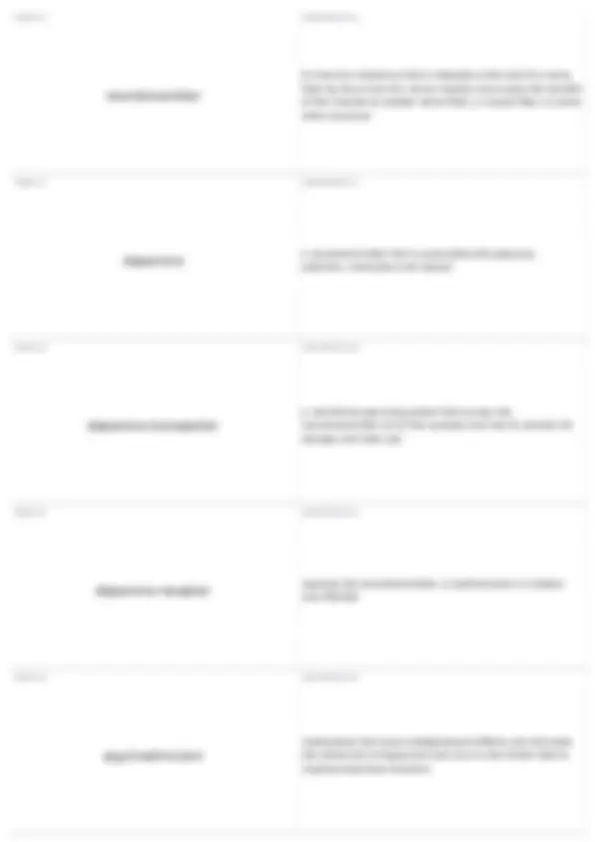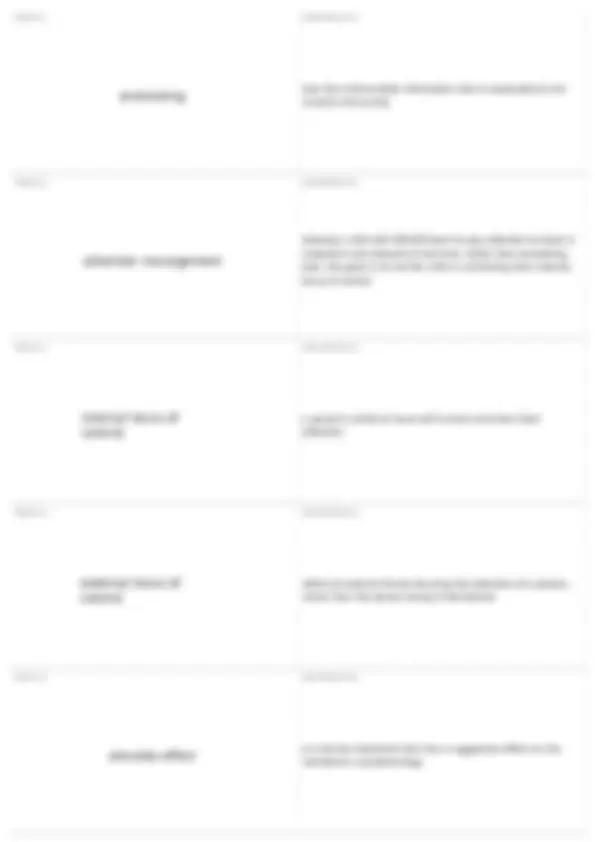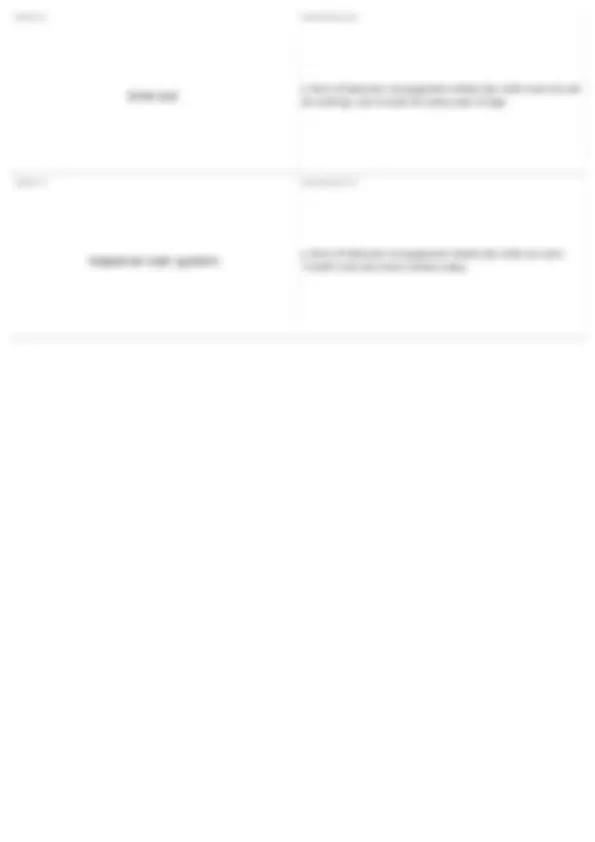






Study with the several resources on Docsity

Earn points by helping other students or get them with a premium plan


Prepare for your exams
Study with the several resources on Docsity

Earn points to download
Earn points by helping other students or get them with a premium plan
Community
Ask the community for help and clear up your study doubts
Discover the best universities in your country according to Docsity users
Free resources
Download our free guides on studying techniques, anxiety management strategies, and thesis advice from Docsity tutors
Definitions for various terms and concepts related to attention deficit hyperactivity disorder (adhd), including symptoms such as inattention, hyperactivity, and impulsivity, executive functions, neurotransmitters, and diagnostic tools. It also covers related topics such as co-morbid conditions, processing, and behavior management strategies.
Typology: Quizzes
1 / 8

This page cannot be seen from the preview
Don't miss anything!





the presence of behavior that typically includes inattention, (hyperactivity), and impulsivity that exceeds that expected by children at a given age/ inability to maintain focused, selected attention TERM 2
DEFINITION 2 persistent and exaggerated motor movements TERM 3
DEFINITION 3 another name for ADHD, was historically used TERM 4
DEFINITION 4 activities such as setting goals, initiating tasks, self- monitoring, self-evaluating, keeping schedules, and managing time TERM 5
DEFINITION 5 can be described as a physical state in which a person is abnormally and easily excitable or exuberant.
the coexistence of one or more disorders TERM 7
DEFINITION 7 the neurological inability to sustain inhibition TERM 8
DEFINITION 8 the ability to continue providing the correct and expected behaviors even when a delay exists between the response and the provision of reinforcement TERM 9
DEFINITION 9 the ability to delay gratification, which is typically problematic for children with ADHD TERM 10
DEFINITION 10 impulsive behavior due to a poorly organized central nervous system- shows a lack of this
A chemical substance that is released at the end of a nerve fiber by the arrival of a nerve impulse and causes the transfer of the impulse to another nerve fiber, a muscle fiber, or some other structure TERM 17
DEFINITION 17 a neurotransmitter that is associated with pleasure, attention, motivation and reward TERM 18
DEFINITION 18 a membrane-spanning protein that pumps the neurotransmitter out of the synapse and into its vesicles for storage until later use TERM 19
DEFINITION 19 receives the neurotransmitter, is dysfunctional in children with AD(H)D TERM 20
DEFINITION 20 medications that have antidepressant effects and stimulate the production of dopamine that acts on the frontal lobe to improve executive functions
how the child handles information that is presented to him visually and aurally TERM 22
DEFINITION 22 helping a child with AD(H)D learn to pay attention to what is important and relevant at the time, rather than something else. the goals is to aid the child in controlling their internal locus of control TERM 23
DEFINITION 23 a person's ability to have self control and direct their attention TERM 24
DEFINITION 24 refers to external forces focusing the attention of a person, rather than the person doing it themselves TERM 25
DEFINITION 25 an inactive treatment that has a suggestive effect on the individual's symptomology
the ability to remain on task, but without the time constraints of focused attention TERM 32
DEFINITION 32 determining how much attention to give each activity TERM 33
DEFINITION 33 the ability to develop a memory bank TERM 34
DEFINITION 34 the implementation of an intervention plan to change, modify, or correct an individual's behavior TERM 35
DEFINITION 35 a form of behavior management for children with AD(H)D, where can earn "credit"
a form of behavior management where the child must sit and do nothing- one minute for every year of age TERM 37
DEFINITION 37 a form of behavior management where the child can earn "credit" and also have it taken away